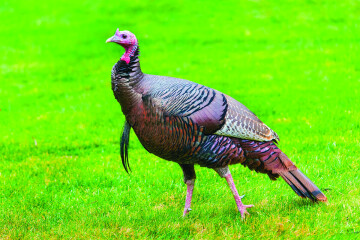A Monument to Education and Appreciation
There’s a stately sandstone butte in southeastern Montana that’s locally known as Shiremire Butte. To some folks that might be an appropriate handle, but the name never registered quite right to my own way of thinking.
As far as coining an appropriate name for the geological formation, I admit I would have difficulty coming up with one. That’s because it has a richness and grandeur that defies interpretation or labeling. A “Monument to Education and Appreciation” might be as close as one could come for a fitting title. Our ability to perceive quality in nature begins, as in art, with attraction, followed by an expansion through successive stages of the beautiful, to values as yet uncaptured by language.
For better than a decade, the butte, located in Custer County about five miles north of Kinsey, has served our family as an observation post for glassing and hunting pronghorns. My sons and I have trekked up a steep game trail to the summit countless times, and the magic of doing so never fails. After reaching the top and walking to the rim, your eyes ricochet in all directions of the compass, and you see how past geological forces carved out a majestic prairie landscape. It’s a place where you can take your soul for a memorable journey — a site where the prairie experience can seep into your memory banks to stay warm and comforting. A place where nature can be seen and heard, unmolested. The surrounding diverse ecosystem seemingly carries a spiritual and mystic quality that permits one to enter a fourth dimension, a space too complex for human faculties to explain.
On the summit of the butte there’s a lichen-covered slab of sandstone that has been exquisitely carved by the erosive forces of wind and water into a chair-like structure that serves as a perfect spot to ease into. From this seat, you scan the surrounding sagebrush flats with binoculars for pronghorns. The “chair”has also served as a council table where we discussed, debated, and mapped out our strategy as to how we were going to stalk our quarry.
Without question, the butte has served as a staging ground for many memorable hunts, yet it has provided much more than the hunting experience. Over the years, we discovered other attributes of the butte that were hidden from view until we removed our blinders to take a closer look. Exploratory tours of the butte turned up fossils, arrowheads, bison bones, “cannonball” sandstone concretions, and antlion craters, all fascinating educational topics which surfaced for discussion. We also came to the realization that it can be the little things in life that can be most meaningful, such as nature’s wealth of offerings. Most of us miss out on the big prizes, like hitting a World Series home run, winning an Olympic gold medal, an Oscar, or a Pulitzer. But we’re all eligible for life’s many small pleasures — a pat on the back for a job well done, hearing the clamorous honking of distant geese, viewing a glorious sunset, and the close companionship of a family dog. One does not have to fret about capturing life’s big prizes, because there are bushels of tiny delights that outdoor adventures provide. These treasures that reside in our memory banks can be recalled at any time of our choosing.
During one of our trips to the butte, we had coffee with a local rancher, who lectured us on the value of an apprenticeship for youths learning a trade, one that would prepare them to deal with the responsibilities the job called for. No argument there. When we departed, my thoughts focused on Shiremire Butte and the apprenticeship my sons had served there. Although the yardstick is difficult to measure in terms of precise accomplishments, the gut feeling is that they developed a fair share of patience, appreciation, knowledge, and an ecological understanding that land in the prairie ecosystem is more than just soil; it is, rather, an open, sustained circuit of energy consisting of soils, plants, and animals. That gut feeling, as of this date, still feels pretty sure that they developed a healthy respect for our priceless natural resources — ever mindful of the importance of environmental preservation and our continuing efforts to stand tall in maintaining a healthy biotic community, and a realization that mankind is a part of nature, not above it. If so, that would be an apprenticeship well served.



